Spillikins ¹146. No Time for Flagships: Devaluation of the Term
The past week was pretty intense, though I did not manage to do everything planned. Much discussion was generated by the review of Nokia N9 and other articles. I think this issue will offer food for thought especially related to the future of particular manufacturers. During the coming week I am going to finish the final review of Samsung Galaxy Note. Meanwhile, look how one of our readers used the tablet-phone (Thanks to @Alex_Shvarz).

Contents:
- No Time for Flagships: Devaluation of the Term
- Nokia 800 sales boosted by PR
- Romania Arrested The Nokia Factory in Cluj
- World Market Q3 Results by Gartner
- GLONASS in iPhone 4s – More News
No Time for Flagships: Devaluation of the Term
Remember how everything was so simple only five years ago? Each manufacturer had a flagship model, so consumers only had to choose the manufacturer and decide how much they were willing to pay. Today things have changed beyond recognition and we see a craze of marketing trying to sell customers another flagship as if this is all buyers need. Marketologists have confused cause and effect. It is clear that sales of the flagship are always higher than those of run-off-the-mill solutions. It is connected with several issues: the price / quality ratio, an array of new features, attractive design and a fairly hefty price tag, which adds to the image. Moreover, do not forget the marketing and advertising efforts, which together form an image of the most coveted flagship. Unfortunately, in the modern market only Apple follows these traditions by offering only one phone, which is incidentally a flagship. It is a rare situation as well.
At Nokia, Samsung, HTC, and Sony Ericsson marketing specialists prevailed. They believe that if you label a model as a flagship it will have appropriate sales. I have the feeling that these strange beliefs found their way into the marketing textbooks, and a generation of professionals start to practice them. I can assure you that sales generation is not achieved simply by using the word “flagship” in connection with the model. Moreover, by applying the term to numerous models it loses its value. The same happens if you say pledge love and passion to every person you come across in the street.
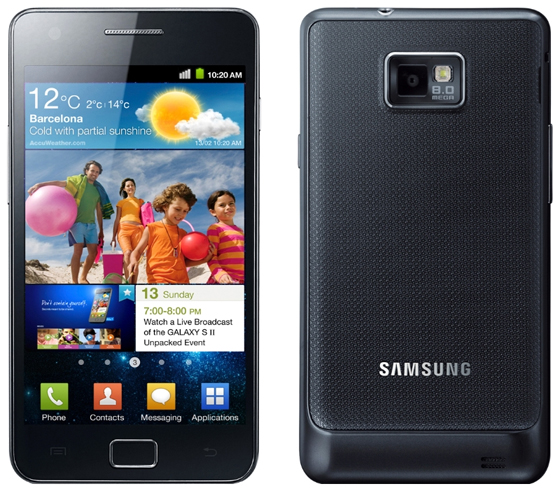
At the Moscow presentation of Samsung Galaxy Note it was proclaimed as a flagship. A reasonable question from the audience that Galaxy S II has been already dubbed as the flagship led to an amazing answer that Samsung has many product lines and each will have its own flagship. It turns out that Samsung has more than 5 flagships at the moment. For example, there is Wave III on Bada, while the Android line-up is simultaneously graced by Galaxy Nexus, Galaxy S II and Galaxy Note to name just a few. I am dazed and confused by the domination of flagships. You can only imagine what happens in the heads of ordinary phone sellers or customers. The companies have forgotten that people buy one device and not a bunch of champions, which difference is impossible to understand. Customers should not waste their time on such discussions. They want to go to the store and buy the flagship device that has no alternatives in the portfolio of a particular manufacturer. This is a fact of life.
Moreover, implicitly one thinks that such a flagship diversity may be due to the fact that the manufacturer has some drawbacks in the previous model or there is something wrong. Otherwise, why a new flagship should be released so soon? After all we have accustomed that when buying a flagship device we can stop worrying at least for one year as we get the most advanced features.
Today, buying a flagship phone we tend to calculate for how long this model will stay at the top of the pile until it becomes "obsolete." Companies often play such games. For example, HTC released Sensation as a flagship only to be followed by Sensation XE, which was a minor variation. Sensation XL was also considered a flagship. The only model worthy of the title was the original Sensation, but it lost some of its allure in this range of similar handsets.
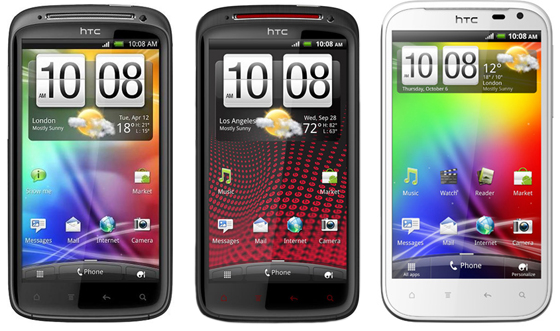
The management chaos in Nokia resulted in “flagships” appearing every couple of months. New flagship on Meego was announced in style. Its predecessors could not expect such advertising budgets, but their sales were several times higher. Within a short period of time Nokia started to advertise and promote the next flagship – Nokia 800. Ridiculously, the body and overall design of both models are identical. In January Nokia will forget about Nokia 800 and with the same verve will promote Nokia 900 (at least this solution boasts a slightly different design). By the way, you can watch its video leaked last week.
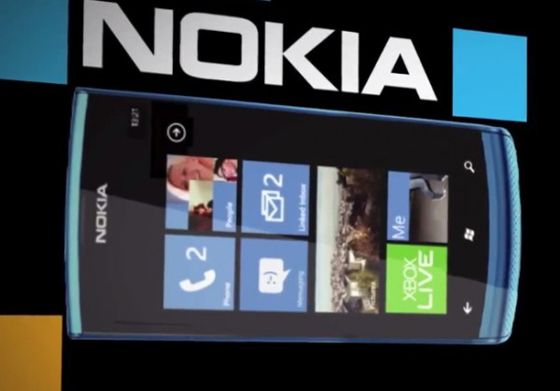
It turns out that Nokia managed to come up with three "flagships" over 6 months. In the next half of the year the numbers will increase even more. Don't forget about Symbian, which is not relevant today, but there will be a new flagship as well.
What happened to the company and why they abandoned common sense? Why have they got lost in marketing terminology, and are trying to impose this misunderstanding on consumers? Similarly, I do not know a single car manufacturer that produces two or three flagship. Why BMW offers only series with high-end solutions in each and believes in only one flagship vehicle. When I buy other consumer electronics devices I can understand that there is a flagship model, another one with simplified features and all the rest. It is a traditional situation that has developed over the years. In the phone market companies suddenly believed in the magic word "flagship", which alone should guarantee sales and success. That's when the flagships craze began, devaluing the concept itself. It will not last long as people will get tired of it. However, some consumers are already choosing understandable solutions, which offer unique features instead of numerous clones.
Back to the table of contents >>>
Nokia 800 sales boosted by PR
The sales of Nokia 800 were marked by all sorts of messages about the success of the product. Some believe that the success is inevitable. I remember a similar situation in the US one year ago and can't but smile. Certain journalists and readers have a remarkably short memory. At the start of sales of Windows Phone 7 in the U.S. one of the clearest examples of the popularity of this OS was a photo with 200 people standing lining up outside the AT&T store, which was considered to be a success for the OS of little interest for consumers. Many periodicals proclaimed the emergence of a new king, but if you give a close look at the photo in question you would notice that the majority of people came to get free tickets to a concert of Maroon5. They even did not have to buy a phone with WP7. It was enough to come to Market Street in San Francisco and get the ticket at the store. Sellers frantically begged to listen to a presentation about WP7, but people took the tickets and left. By the end of the day 10 out of 20 phones were sold. The promotion campaign was not too successful.
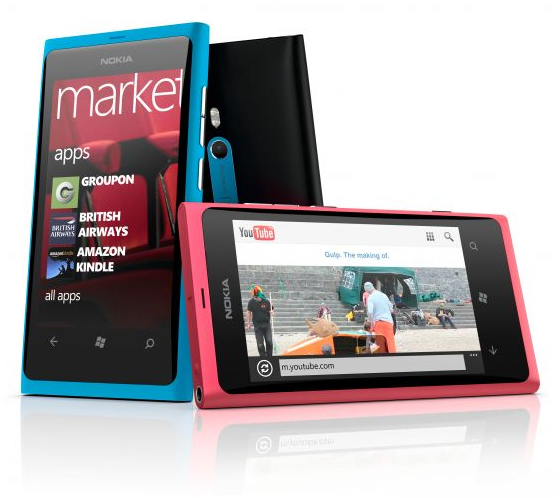
AT & T realized from the early days that the success of Windows Phone is not too obvious despite the campaign by Microsoft, which cost $100 in the US alone. Therefore, in November 2010 the carrier came up with the solution - buy any WP7 phone and get the second for free. This was the sign that the OS was not popular.
At the beginning of the year all partners of Microsoft could not hide the fact that sales were low. One top manager from LG was followed by AT & T and the secret was impossible to keep. Criticism was massive. Sales were overwhelmingly disappointing. However Microsoft was not embarrassed and started to talk that the next version of Mango will be different. Many began to associate the future popularity of this version with the sales of first Nokia models on WP7. However, today we can say that WP7 Mango enjoys the same popularity as the first version of the OS. HTC was the first to sell its models, but there is not much demand apart from HTC Mozart, which is sold in Russia at the lowest possible price, which does the trick. We can argue that consumers are waiting for Nokia smartphones, but it is hard to believe.
Curiously, Nokia has adopted a methodology for Microsoft and decided to show the "sale" at the expense of gifts. For example, the UK operator Orange offers free Nokia 800 with the contract for 36 pounds a month (it's pretty expensive contract) and gives Xbox360 for free. An excellent proposal that is likely to be in demand and Orange figures confirm that. All such "sales" will be popular, because people love to receive free stuff and XBox360 is a desirable product.
For obvious reasons Nokia does not report first sales data. The company is not profitable to give any exact figures, because it would destroy the entire PR campaign around these products. We can read good reviews and positive feedback, which is exactly the same as the first WP7 models one year ago.
People have a very short memory indeed. Nokia is losing the smartphone market actively. The first results of this failure will be received in April, when the company will report its first quarter figures. Up to that point Nokia will be able to adequately refer to the fact that in the 4th quarter WP7 was sold on a limited number of markets. The irony is that they are the main markets for the company.
Back to the table of contents >>>
Romania Arrested The Nokia Factory in Cluj
In 2007 Nokia prospered and was expanding into countries with high demand for Nokia phones. as a result, they built a factory in the Romanian province of Cluj 400km away from Bucharest. It was a medium size factory capable of employing 3 to 4 thousand people. Nokia also built an industrial village nearby, the nearest airport was renewed to take large cargo planes. A railway link was built between the village and the factory so that workers could commute with ease and speed. The village got all the necessary public facilities. Nokia invested ˆ33 million into this project and it was a real blessing for Romania where there was no such modern industry. The company was doing well back then even though the reason they needed a new factory is because they could no longer afford the factory in Bohum, Germany. I have been to both of those factories: in Bohum in 2006 and in Cluj in 2009 and they looked pretty much the same to me.
However, the Bohum factory was providing a much better quality than its Romanian successor which became notorious for faulty phones despite practically all steps of production being automatic. The labor force surely was a lot cheaper than in Germany but at the cost of quality.
In September 2011 Nokia decides to shut the Cluj factory. The Romanian authorities responded with fiscal claims stating Nokia had been violating the EU customs provisions by importing chargers declared as phone parts while only internal components of phones can be classified as parts. The sum of the claim is ˆ10 million and to ensure Nokia pays the authorities arrested the factory and all its equipment until the issue is settled. Nokia reps are still allowed into the factory facilities but they cannot remove any of the equipment. Stalemate.
The Romanian authorities’ reaction was so radical because the factory contributed a hefty amount of taxes in this underdeveloped province. In 2007 when Nokia was shutting down the Bohum factory there was a lot of critique too but it never came to such serious legal actions. Naturally, a factory shutdown is always a blow on a region’s economy and both parties’ stances are understandable. On the one hand, we have a manufacturer trying to save while its sales are tumbling. And on the other hand we have a regional administration trying to make the most out of this loss for the province. No party is can be blamed for this it is just a natural course of events.
Back to the table of contents >>>
World Market Q3 Results by Gartner
Last week’s biggest piece of news probably was the Gartner report on mobile phone sales. I remind you that Gartner calculates sell-outs i.e. sales to users while other agencies use sell-in numbers i.e. shipments to retailers. a comparison of different reports can tell us a lot about what was going on. But let’s have a look at Gartner’s Q3 data first:
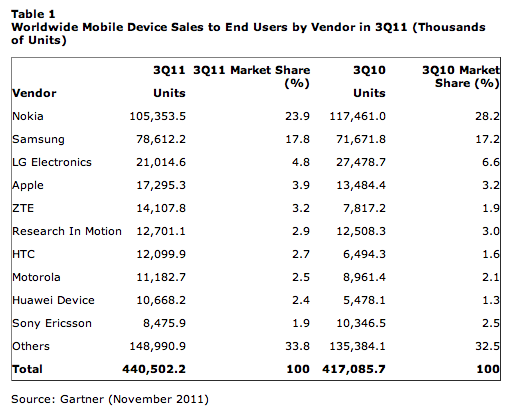
This report tells us that not only Nokia is continuing to lose its market share (for two years running to the record low 23.9% last quarter while in Q3 2009 Nokia had 36.7%) but also for the first time in many years the number of handsets produced has fallen. I want to clarify a few things: the market share depends on the sales of all the market players e.g. if you sell 10 million units while the total quantity of phones sold was 100 million units it means you occupy 10% of the market. If the next year you sell 15 million units while the total number of phones sold is 200 million handsets then you market share shrinks. This, however, does not mean you are failing all other factors held equal you are doing better than last year. When assessing a company’s performance we need to take into consideration the company’s market share, the market size and a number of other factors. In Q3 2009 Nokia sold 113.5 million handsets while in Q3 2011 only 105 million - a dramatic fall. We also want to know what is going to happen next and we can find some hints in IDC reports which assess shipments to retailers.
| Top Five Mobile Phone Vendors, Shipments, and Market Share, Q3 2011 (Units in Millions) |
| Vendor |
3Q11 Unit Shipments |
3Q11 Market Share |
3Q10 Unit Shipments |
3Q10 Market Share |
Year-over-year Change |
| Nokia |
106.6 |
27.1% |
110.4 |
31.6% |
-3.4% |
| Samsung |
87.8 |
22.3% |
71.4 |
20.5% |
23.0% |
| LG Electronics |
21.1 |
5.4% |
28.4 |
8.1% |
-25.7% |
| ZTE |
19.1 |
4.9% |
12.1 |
3.5% |
57.9% |
| Apple |
17.1 |
4.3% |
14.1 |
4.0% |
21.3% |
| Others |
142 |
36.1% |
112.5 |
32.2% |
26.2% |
| Total |
393.7 |
100.0% |
348.9 |
100.0% |
12.8% |
| Source: IDC Worldwide Mobile Phone Tracker, October 27, 2011 |
| Note: Vendor shipments are branded shipments and exclude OEM sales for all vendors |
It’s pointless to compare the figure of the two tables directly what we need is to see the trends. The Nokia figures are about the same (106.6 by IDC and 105.3 by Gartner). At first, it may seem as Nokia were doing great and all the phones they get to the market is sold immediately. But shipments to wholesalers are always 2 to 3 weeks ahead of shipments to retailers so IDC figures should be higher Gartner’s data by the quantity of handsets shipped within this period. And even considering only a two week delay Nokia should be showing 124.1 million units in the IDC table. It means Nokia is shipping less.
Let’s now have a look at Nokia’s biggest rival – Samsung. According to Gartner Samsung has sold 78.6 million handsets in Q3 while IDC tells us about 87.8 million units shipped. The 9.2 million unit difference is just below a two week stock supply for retailers. These figures mean that Samsung is growing its market share and in Q4 its share will get only bigger (unless, of course, there is an overstocking issue but that rarely happens in third quarters).
Applying the same method we see that LG is also struggling and it is following the same Nokia scenario. ZTE on the other hand is doing very well like Samsung – it has sold 14.1 (Gartner) million units and shipped 19.1 million (IDC). I must note that this analysis will not work for Apple as this company has a different sales scheme and the time of shipment and sales is a lot shorter than that of other companies. I hope this little insight into market analysis helped you to better understand what the market trends are. Let’s now look into the smartphone segment – Gartner provides the following data:

Android has got over the half of the retail smartphone market while just a year ago Android’s share was meager 25%. The growth is mainly attributed to the success of Samsung and minor players who dominate in Europe thanks to low prices and a wide range of products. Meanwhile, Symbian is almost gone from the European market especially in Western Europe where Symbian smartphones are almost extinct as their share dropped by about 50% in just one year. This death of the obsolete Symbian is one of the major success factors of Android. The anticipation of the new iPhone slowed down sales of the older iPhone models and that did not allow Apple to increase the market share but I think it will grow in Q4 2011 and may be even catch up with Symbian.
In Q3 2011 Samsung has finally become the biggest smartphone manufacturer in the world (24 million handsets sold and there is no way Nokia can catch up with Samsung). Nokia’s hopes concerning Windows Phone 7 are just as futureless as WP7 and Windows Mobile smartphones sales are gloom. All Microsoft OS smartphones made up for only 1.5% of the smartphone market in Q3 2011 while a year ago their share was 2.7%. According to Gartner in 2009 Microsoft’s share of the smartphone market was 8.7% falling to 4.2% in 2010 and it will drop even lower in 2011. And that is the market share left for Nokia. Nokia’s hopes that former Symbian users would migrate to WP7 did not came true. Some of loyal users will surely go for Nokia WP7 smartphones but it won’t change the situation and Nokia will continue to lose market. Only a miracle can save Nokia now but there is none I can see so Q4 2011 will be the worst in the company’s long history both for phone and smartphone markets.
Back to the table of contents >>>
GLONASS in iPhone 4s – More News
In late October there was some stir concerning iPhone 4s GLONASS features and I have already expressed my opinion in a Spillikins issue about this matter. I said that due to a number of reasons GLONASS is not working in iPhone 4s.
There was a video not so long ago showing GLONASS system working with no GPS connection. Some of our readers duly noted that there are also combo GLONASS/GPS chips that could have been used in iPhone 4s. And judging by the video this might be the case with iPhone as on the video undoubtedly they use GLONASS. However, a question arises – what is this so called combined mode that assumingly improves GPS accuracy by means of the GLONASS system. The thing is what we saw is GLONASS operating on its own with no help from or contribution to GPS. However, in this case I am glad I was wrong about GLONASS operability.
Further Reading:
P.S. Have a nice week. I will try to write all the reviews I have promised to. I hope you noticed that we have more reviews now and some of them become a real comment battlefield. Have fun.
Do you want to talk about this? Please, go to our Forum and let your opinion be known to the author and everybody else.
Back to the table of contents >>>
Related links
Eldar Murtazin ([email protected])
 Twitter Twitter  Livejournal Livejournal
Translated by Maxim Antonenko ([email protected]), Robert Mugattarov ([email protected])
Published — 26 November 2011
Have something to add?! Write us... [email protected]
|









